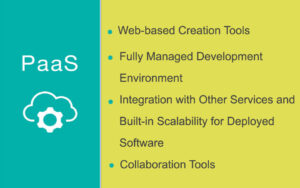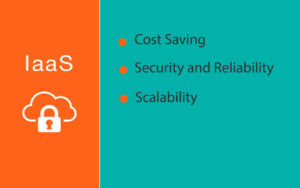
FLEXIBILITY, SIMPLICITY, CHOICE. These are among the biggest driving forces behind cloud computing. Just as we have come to expect to be able to watch movies or play games whenever we want online, cloud computing offers a way to tap into computing resources on demand: data, computing, applications and services.
On-demand computing is a delivery model in which computing resources are made available to the user as needed. The resources may be maintained within the user’s enterprise, or made available by a cloud service provider. When the services are provided by a third-party, the term cloud computing is often used as a synonym for on-demand computing.
The on-demand model was developed to overcome the common challenge to an enterprise of being able to meet fluctuating demands efficiently. Because an enterprise’s demand on computing resources can vary drastically from one time to another, maintaining sufficient resources to meet peak requirements can be costly. Conversely, if an enterprise tried to cut costs by only maintaining minimal computing resources, it is likely there will not be sufficient resources to meet peak requirements.
The on-demand model provides an enterprise with the ability to scale computing resources up or down with the click of a button, an API call or a business rule. The model is characterized by three attributes: scalability, pay-per-use and self-service. Whether the resource is an application program that helps team members collaborate or additional storage for archiving images, the computing resources are elastic, metered and easy to obtain.
Cloud is a growth engine for business. As the technology changes how we interact with everything from online media to healthcare to banking services, cloud computing is making it possible for companies to provide new services faster, create new applications quickly, and figure out the goods and services that customers like.
Companies using the cloud can focus on business, instead of buying and running servers and software. The cloud gives them new tools and techniques, which reduces the time it takes companies to go from idea to app. It helps them pull together, share, and analyze huge amounts of data.
Most cloud computing services fall into three broad categories: infrastructure as a service (IaaS), platform as a service (PaaS), and software as a service (Saas). These are sometimes called the cloud computing stack, because they build on top of one another. The trick for any organization is knowing which model to choose, based on what it needs to accomplish.
Each of these different models are offered as a service, dovetailing with another advantage that the cloud offers — licensing rather than building and buying software and hardware. They are:
1) The Software as a Service (SaaS) model allows businesses to provide direct access to the applications by employees, partners or clients. Because these applications are centrally managed on the cloud, there are no licenses or upgrades to maintain.

2) The Platform as a Service (PaaS) model is an application development platform delivered on demand, allowing developers to focus on software design, development and deployment — without the cost and complexity of buying and managing the underlying hardware, software, provisioning and hosting.
For example, by using PaaS, an online gaming company can become more nimble and innovative. Before cloud resources became available, it might have taken the company two to four months to launch products using only its own infrastructure and custom configurations. The PaaS approach allows that same company to provide the right resources in just hours for developers building games, and the customers who want to play them.

3) The Infrastructure as a Service (IaaS) model delivers compute power, storage and networking on demand, eliminating the high cost of maintaining, staffing and providing power and cooling for an in-house data center if the service is provided externally. If it’s provided internally at a departmental level, it still offers greatly improved speed and efficiency in providing compute resources needed for the business.
Not all clouds are the same. There are three different ways to deploy cloud computing resources: public cloud, private cloud, and hybrid cloud.

Public cloud
Public clouds are owned and operated by a third-party cloud service provider, which deliver their computing resources like servers and storage over the Internet. With a public cloud, all hardware, software, and other supporting infrastructure is owned and managed by the cloud provider. You access these services and manage your account using a web browser.
Private cloud
A private cloud refers to cloud computing resources used exclusively by a single business or organization. A private cloud can be physically located on the company’s on-site datacenter. Some companies also pay third-party service providers to host their private cloud. A private cloud is one in which the services and infrastructure are maintained on a private network.
Hybrid cloud
Hybrid clouds combine public and private clouds, bound together by technology that allows data and applications to be shared between them. By allowing data and applications to move between private and public clouds, hybrid cloud gives businesses greater flexibility and more deployment options.
Technology on its own doesn’t produce change. It’s how it’s used, and how well it’s understood that creates real change and a culture of innovation.
Adapted from: Searchitoperations, Wired & Azure



































































